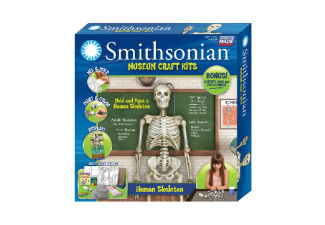STEM Sells (Toys, That is) 5/10/2017
Amazon earlier this year launched its STEM Club, a monthly subscription program that delivers curated science, technology, engineering and math (STEM) toys for $19.99 a month, including free shipping. Each month, the online retailer’s STEM toy experts send a high-quality, age-appropriate toy designed to encourage children to learn through play and provide the building blocks for future success in fields like robotics, computers, and natural sciences.
Shoppers can purchase subscriptions that are segmented by three age groups: three to four years old, five to seven years old, and eight to 13 years old, with the toys increasing in complexity as the age levels rise.
According to an article in Tech Crunch, the program was likely developed due to the fact that STEM toys were the second-most visited category and had the highest sales volumes during last year’s holiday season. So far, the STEM Club has been well-received, with an average 4-star rating among 212 customer reviews.
Target, which according to an article in Fast Company, saw double-digit growth in STEM toy sales last year, and has since launched a destination page for these items, touting the value of STEM toy play with tags line such as “Teach Through Play,” and “Prep for the Future.” In addition to segmenting these products by age, as Amazon does, Target segments them by educational categories, including Biology, Chemistry & Physics, Circuits & Robots, Coding, Earth & Space, Engineering, Games and Math.
Indeed, if the buzz among buyers and sellers at ECRM’s recent Toy EPPS is any indication, the popularity of STEM toys will only continue to grow, as retailers and suppliers ride the wave of the constant stream of media reports on the importance of STEM education.
Here are some things to keep in mind regarding STEM toys:
Educational investment vs. novelty item: Consumers of STEM toys view them as an investment – in education, in their child’s future – rather than merely a play item, so they are willing to spend more money on them and continually seek out new items in this category because they will enhance the child’s growth. When a kid stops playing with a regular toy, it’s because they are bored. When they stop playing with a STEM toy, it means they have learned all they can from it and need a bigger challenge (hence, a new STEM toy). Because of this…
STEM toys have built-in continuity: Amazon developing its subscription program takes advantage of this fact, providing a means the child’s learning and thus needing increasingly more complex toys by providing new STEM toy experience on a regular basis, and the ability to step up the level of complexity as the child ages. This continuity can mean strong sales throughout the duration of the program. Just think, if a parent starts the subscription program at the 3-year old level and continues it throughout the program, that’s 11 years’ worth of monthly sales at the current price of $19.99 per month, $240 per year, or approximately $2,640 for the 11 years on the program – per customer.
Suppliers can take advantage of this continuity by developing a series of STEM toys under their brands, each increasingly complex to encourage the child’s intellectual growth over the long term. Follow the lead of insurance companies and develop “cradle-to-grave” packages.
Classification and Merchandising Challenges: One of the challenges, however, is classifying exactly what a STEM toy is, and how they should be merchandised inside the store. There is no set definition of what makes a toy a STEM toy, and no labeling requirements like there are for organic products, and sometimes it can be fairly subjective. Can regular building blocks be considered a STEM toy? And what about merchandising? Should there be STEM toy sections as some retailers do, or should they just merchandise them throughout the store with labels and signage as Toys R us does?
While it’s too early to tell which method will work the best, perhaps suppliers can include Merchandising as a STEM category and the kids growing up on those toys can figure it out.

